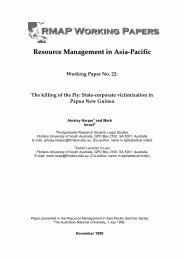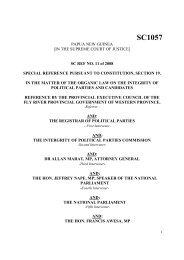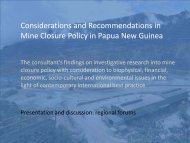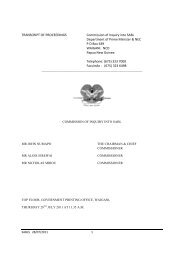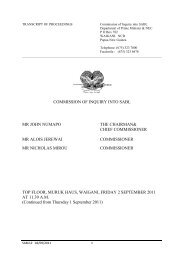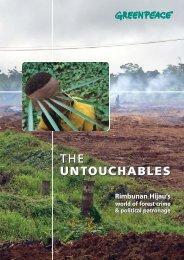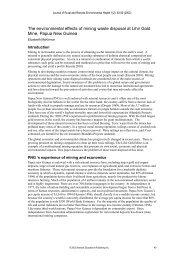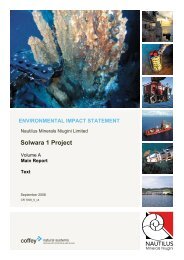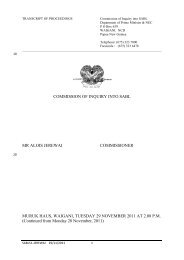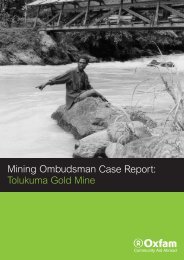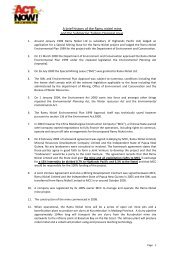Fishy business. The Social Impact of SST.pdf - Act Now!
Fishy business. The Social Impact of SST.pdf - Act Now!
Fishy business. The Social Impact of SST.pdf - Act Now!
You also want an ePaper? Increase the reach of your titles
YUMPU automatically turns print PDFs into web optimized ePapers that Google loves.
Back in January <strong>of</strong> 2000, the Senior Policy Planner for the East Sepik Provincial Administrationproduced a cost analysis <strong>of</strong> the factory based on <strong>SST</strong>’s 1999 <strong>business</strong> proposal submitted to theNational Fisheries Board, and a Feasibility Study and Site Selection Report submitted byIntegrated Manufacturing Planning Ltd. (USA). Under Employment, the report says, “When theTuna Processing Plant is in full operation in year one, it will employ about 970 local employees.As per Business Plan an average wage per hour <strong>of</strong> US$0.90 + 7% fringe benefit will be paid fortwo shifts.” This figure converts to roughly K3/hour before benefits.Based on the 970 local labour requirements for the factory, working two shifts for 8 hoursper day for a total <strong>of</strong> ten (10) working days per fortnight, the calculation is worked out to beUS$ 76.80 per local employee per fortnight.In other words, someone working 8 hours a day for ten days would take home $72 (rather thanK72). In the course <strong>of</strong> a year, given a two-week unpaid vacation, this person would make$1800, or roughly K6000. That is, if you survived eight-hour shifts standing in rubber bootsloining tuna barehanded all day. In addition, the wage projection tables show no increasestructured for employees in the first five years <strong>of</strong> employment.If we look at the actual workforce and wage, we can see that the average permanent wage(which only kicks in after 3 months) is K1.10/hour (up from K1), which means K40 hour weekgarners K88 (before deductions for NPF). This is roughly US$26/fortnight, rather than theprojected $76.80, or one-third the estimated wages in the original <strong>business</strong> plan. <strong>The</strong> actualannual wage <strong>of</strong> a worker is K2200 (or $US660), in his or her second year <strong>of</strong> employment. In thefirst year, he or she would only make only K2104, after three month’s probation. This isroughly US$630.Wages in Papua New Guinea are set by the government’s Minimum Wages Board. In 1992, theBoard abolished the method <strong>of</strong> setting wages according to the movement <strong>of</strong> the Consumer PriceIndex, and established a legal minimum rate <strong>of</strong> K22.96 per week for unskilled adult workers.This abolished the rural and urban wage differential. Since 1992, however, as the kina hasdropped and cost <strong>of</strong> living escalated, the minimum wage has remained unchanged, unpegged asit is to any cost <strong>of</strong> living index. Responsible employers have adjusted wages accordingly, but noone is legally bound to do so. <strong>SST</strong>C’s probationary wage (lasting three months) for loiners isthus above the legal minimum, even if it remains well below any wage adjusted to a ConsumerPrice Index. Beginning employees are on a rate <strong>of</strong> 90 toya/hour, and after three months theygraduate to the permanent wage <strong>of</strong> K1.10/hour.Typical probationary wage fortnight pay for productionworker: 90t/hour with overtime totals K108.45 for two weeks’ work.98



